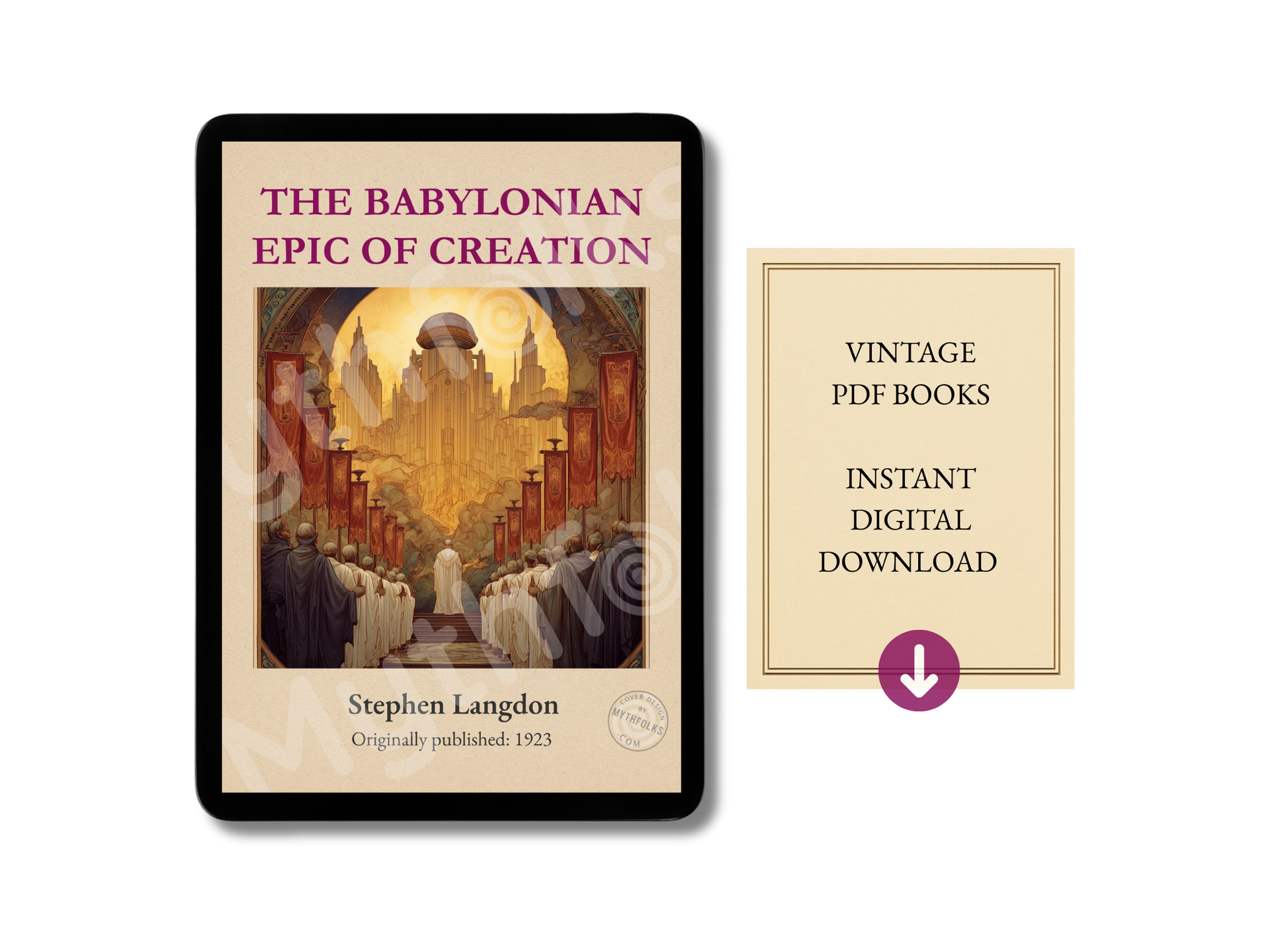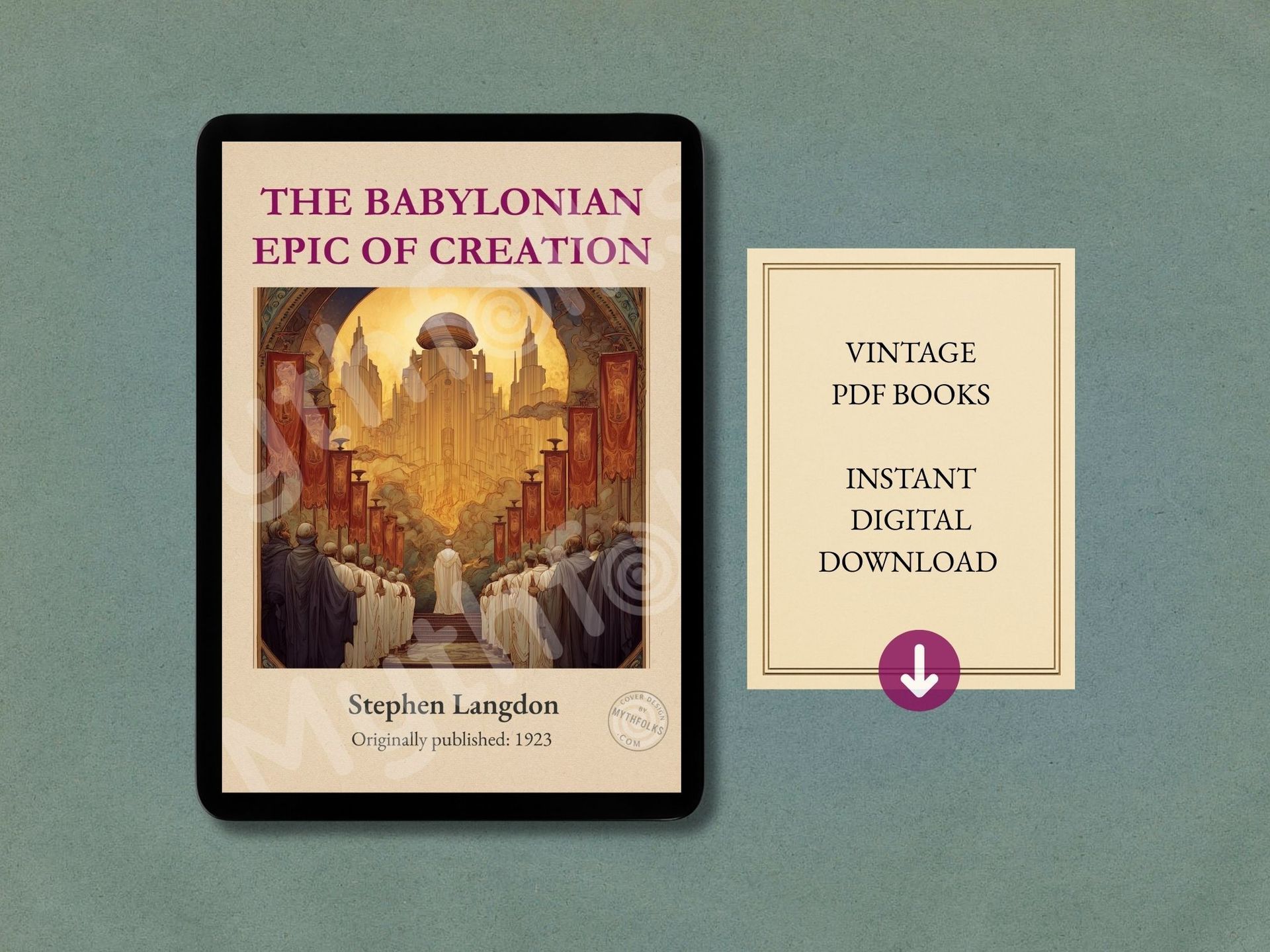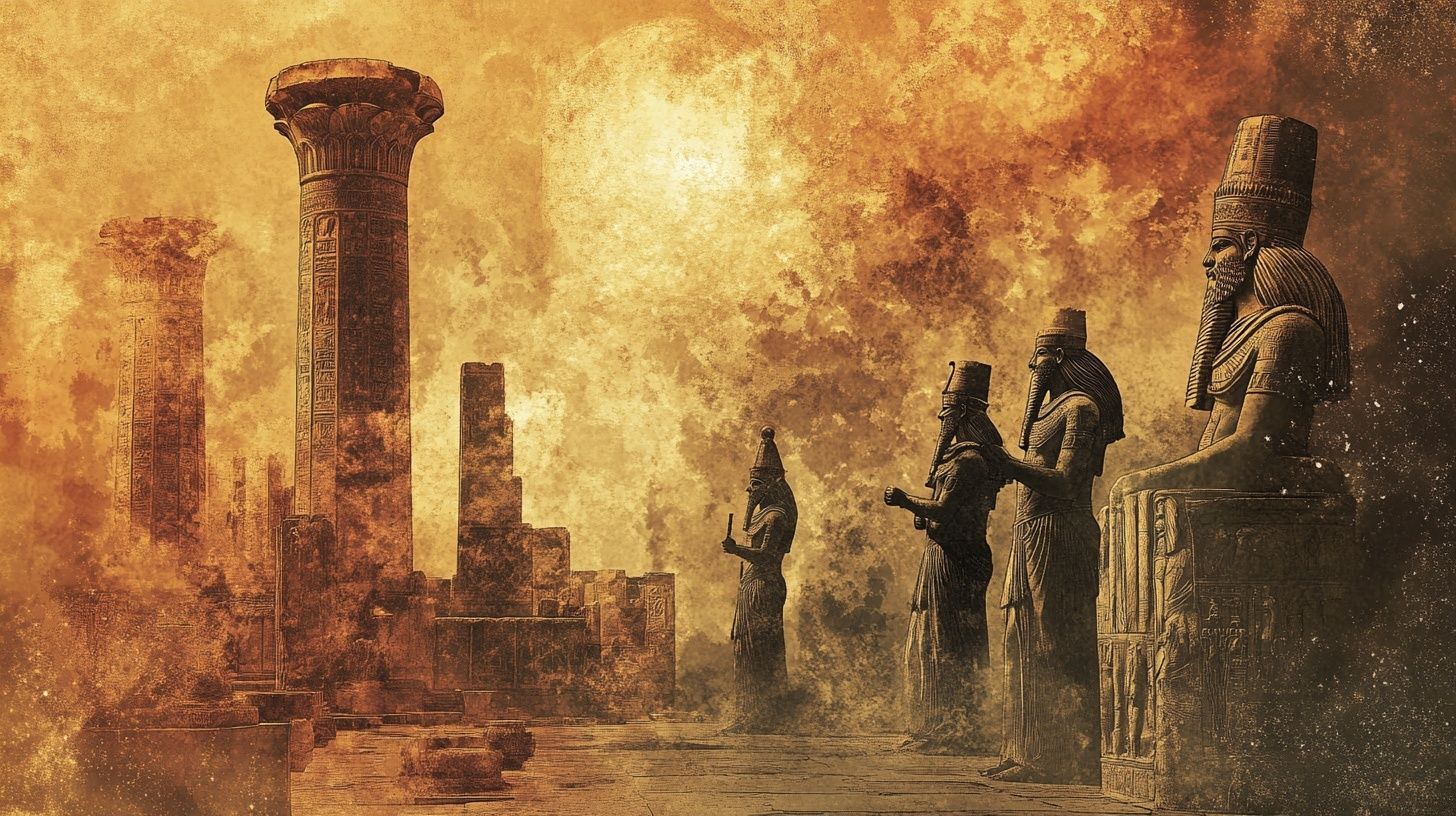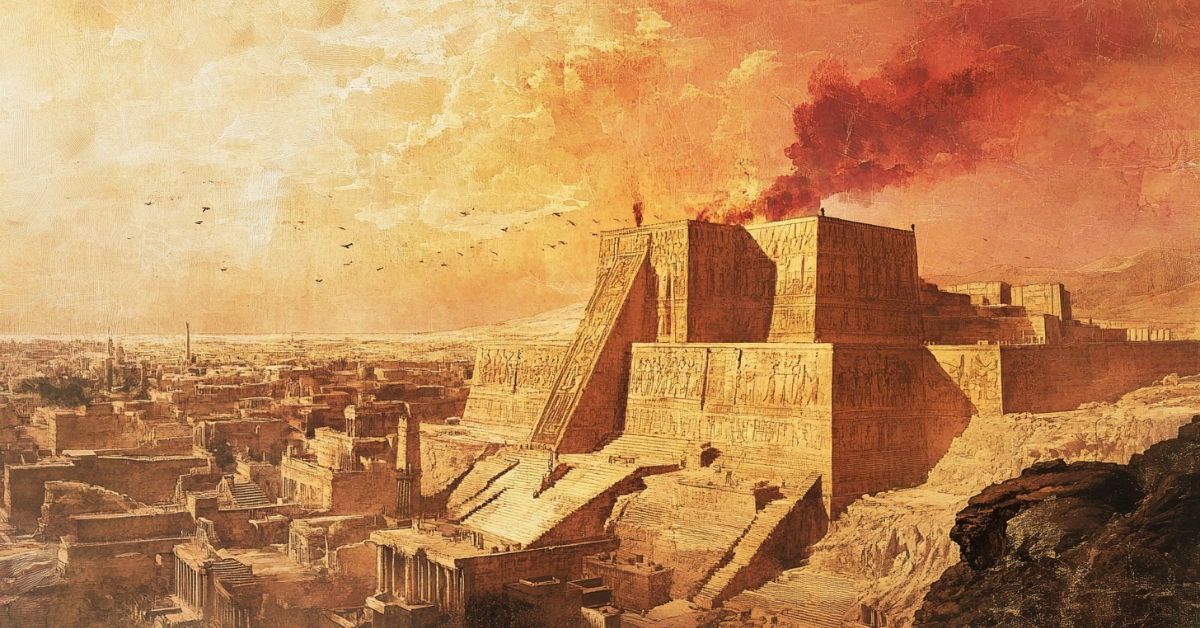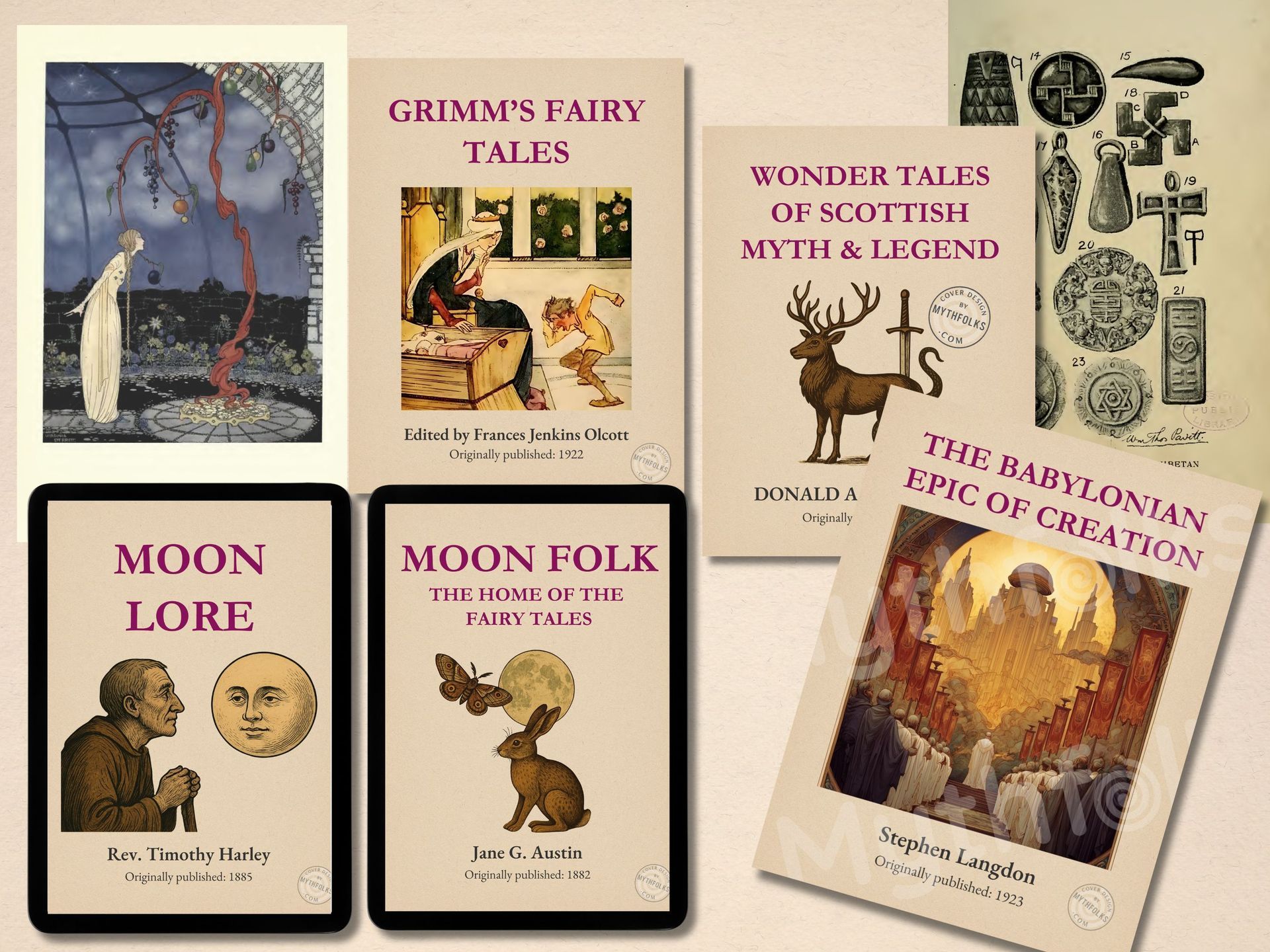The myth of Enuma Elish or the Babylonian creation epic

In this article:
1. The first Gods of Bablyonia & early conflict
2. Tiamat's monsters & Marduk's rise
3. Marduk against the primordial sea dragon
4. Creating the universe from Tiamat's body
5. Humanity created to serve the Gods
6. The God's Assembly & Babylon's rise
Among the many tales of Mesopotamian folklore, the Babylonian epic of creation, known as the Enuma Elish, is a central story.
This foundational text explained the universe, the gods and humanity's place within the cosmos, as it was understood by early man.
For the Babylonians, it was a key religious text, justifying their main god Marduk's supreme power and deeply influencing their most important yearly festivals.
Scholars spent a
long
time carefully putting this epic back together from ancient clay tablets and gave us a detailed look into how Babylonians thought about creation.
Here's how the universe was made according to these ancient people...
Updated: 25th Aug 2025
Author: Sian H.
The first Gods of Babylonia and early conflict
For a deeper dive on all the gods and goddesses of Babylonia, check out my article here.
The Enuma Elish begins when nothing else existed. There were only two original beings:
- Apsû, the freshwater ocean
- Tiamat, the saltwater ocean.
Although they're often referred to as gods, they were more a concept rather than beings with human-like traits. Next came:
- Lahmu and Lahamu: This first pair of deities emerged directly from the union of Apsû and Tiamat.
- Anšar and Kišar: After Lahmu and Lahamu, a more powerful pair came into being. Their names mean "whole heaven" and "whole earth," representing the first separation of the cosmos into distinct realms.
Again, those 4 "deities" were still more concepts rather than distinct personalities with specific realms of governance or worship.
But then things changed and the first human-like gods were born:
- Anu, the Sky God: Anšar and Kišar gave birth to Anu, the powerful god of the sky.
- Ea, the God of Water, Magic & Wisdom ( also called Nudimmud): Anu then fathered a son who was his equal in power and surpassed all others in wisdom.
As the younger gods grew in number, their activities disturbed Apsû's peace. Apsû became increasingly annoyed and decided to destroy them. Tiamat initially resisted this plan of wiping out their children (!) but eventually agreed.
However, Ea was too wise and learned of Apsû's plan. Using his powerful magic, he cast a spell that put Apsû and Mummu (Apsû's advisor) into a deep sleep. Ea then killed Apsû and took Mummu captive, establishing his own authority over the freshwater deep.
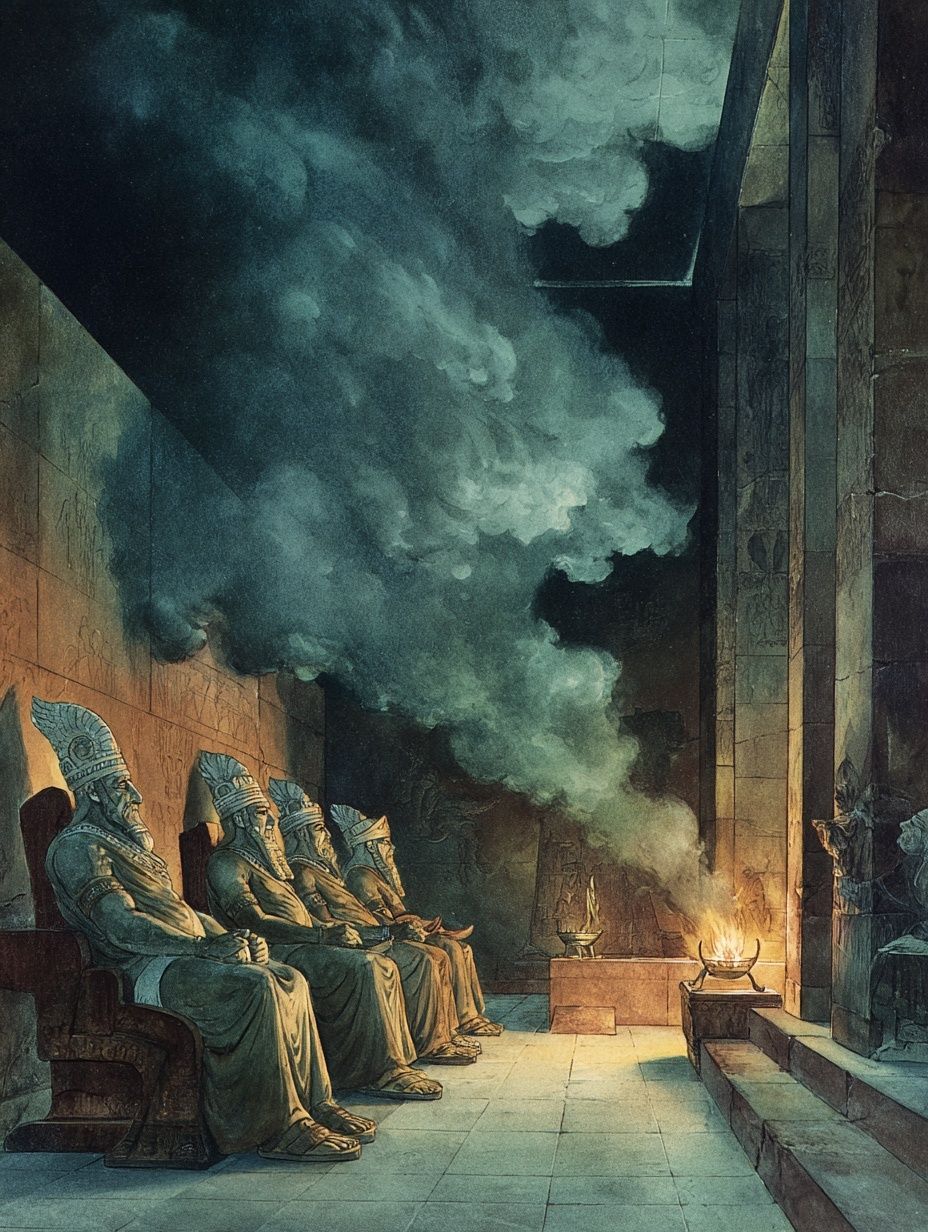
Tiamat's monsters and Marduk's rise
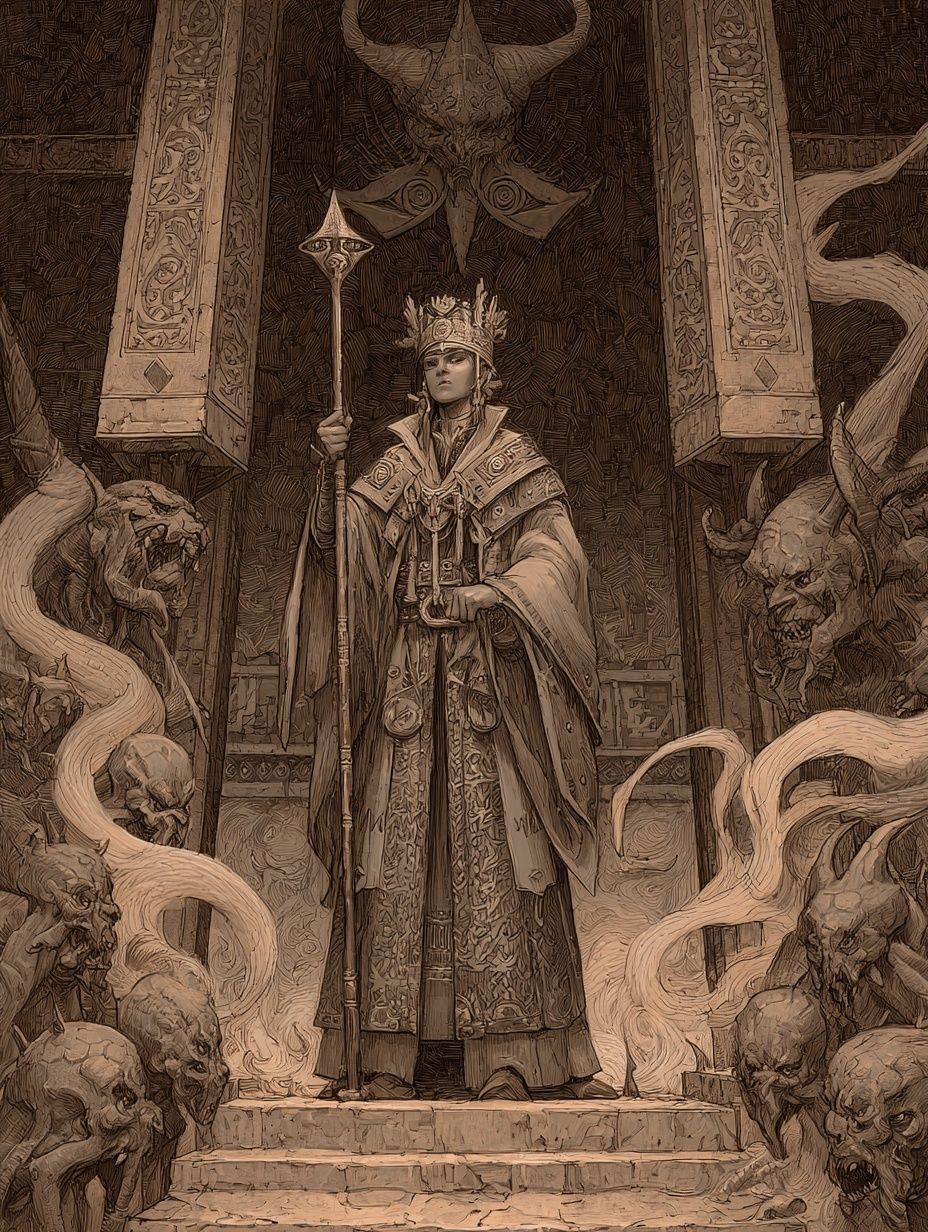
Apsû's death made Tiamat furious. Filled with rage, she decided to get revenge and created a terrifying army of eleven monsters to help her fight, these were:
- The Viper (Bašmu)
- The Raging-Serpent (Mušruššu)
- Lahamu (a great hairy beast, distinct from the primordial goddess)
- The Great-lion (Ugallu)
- The Gruesome Hound (Uridimmu)
- The Scorpion-man (Girtablilu)
- The destructive spirits of wrath (or mighty storm-demons)
- The Fish-man (Kulilu)
- The Fish-ram (Kusarikku)
- The Unrivalled-wind
- The Tempest
Tiamat also promoted Kingu, making him her new partner and the leader of her monstrous forces.
She gave him the "Tablets of Destinies", which held immense cosmic power, giving him control over the fates of gods and the universe itself.
The other gods, faced with Tiamat's strong army and Kingu's new power, were frozen with fear. Ea and Anu both tried to face Tiamat but backed away, unable to match her strength.
It was Marduk, Ea's son, who then stepped forward. He offered to fight Tiamat, but only if he was granted supreme authority over all the gods if he won.
This would make him the undisputed leader of all gods.
Marduk against the primordial sea dragon
Desperate, the gods agreed to Marduk's terms. They gathered, feasted, and formally gave him supreme power. They even tested his abilities by having him destroy and then recreate a magical garment with just his word, confirming his immense strength.
Marduk then prepared for battle, making special weapons. He crafted a large net to trap Tiamat, created a storm-chariot and gathered the four powerful winds to help him. He also armed himself with a club and lightning.
Marduk faced Tiamat, who tried to swallow him whole. But Marduk sent a strong wind into Tiamat's mouth, inflating her. He then pierced her heart with an arrow, killing the original sea dragon. With Tiamat defeated, Marduk captured Kingu and imprisoned Tiamat's monstrous army, securing victory for the younger gods.
Creating the universe from Tiamat's Body
After his victory, Marduk began the huge task of creating the universe from Tiamat's defeated body. He split her vast form in two, using one half to create the heavens and the other to create the earth.
He then carefully arranged the celestial bodies, setting the movements of the planets, the moon, and the star and organizing the zodiac.
Book V of the Enuma Elish is largely an astronomical poem, describing Marduk's precise ordering of the heavens, showing Babylonian knowledge of how the sky worked.
Marduk also assigned specific places for the major gods within this newly formed universe, giving them homes in the sky and on earth.
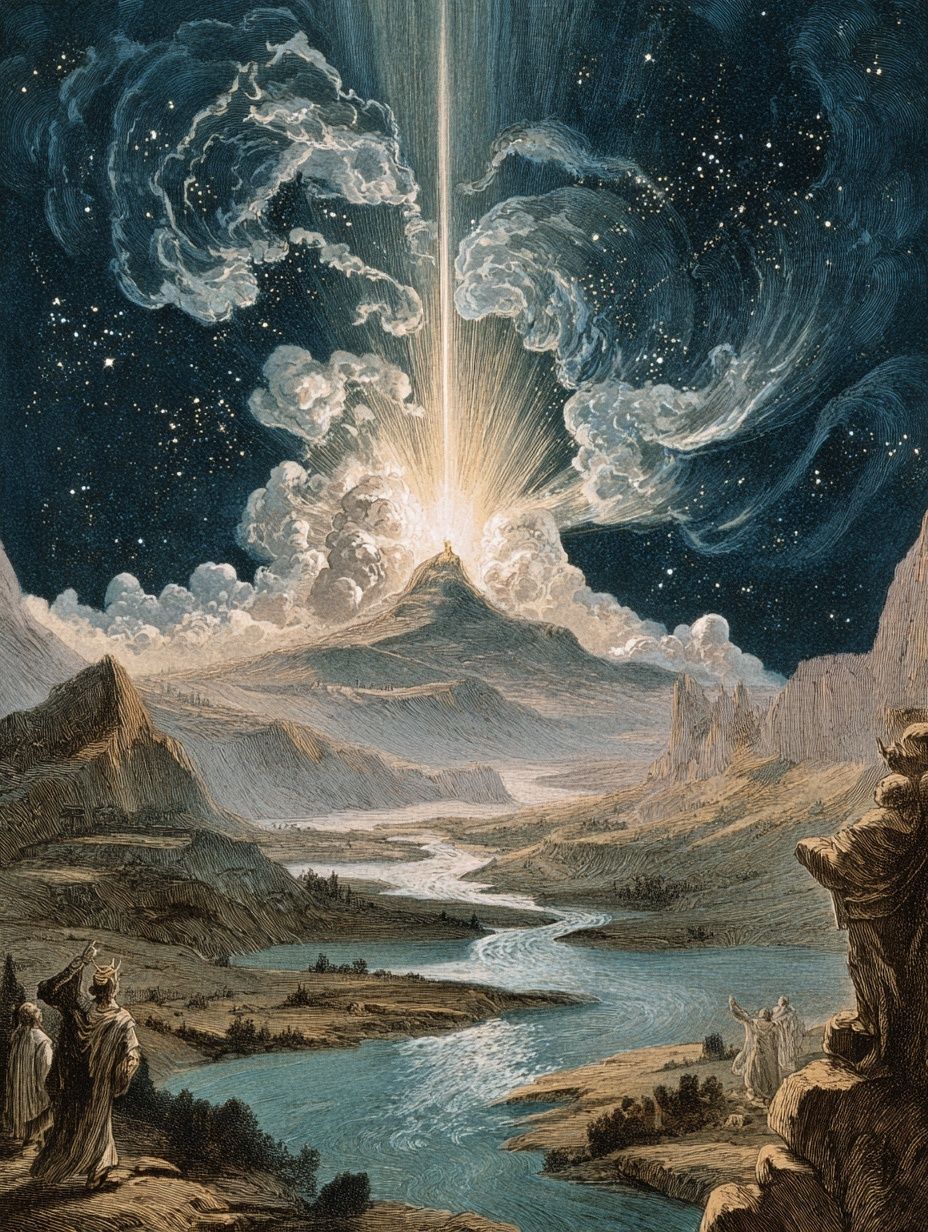
Enjoying this article?
Check out this definitive vintage ebook on Enuma Elish!
(Clicking the link will open the Mythfolks Etsy shop in a new tab.)
And humans were created to serve the Gods!
With the universe now in order, Marduk decided to create humankind. His goal was clear: to free the gods from their labor and ensure they received constant worship and offerings.
To do this, Kingu, Tiamat's defeated general and the one who held the Tablets of Destinies, was sacrificed. From Kingu's blood and bone (and mixed with some clay), Ea fashioned humanity. Humanity's purpose was thus set: to serve the gods through religious service and offerings, providing the food and respect the gods needed.
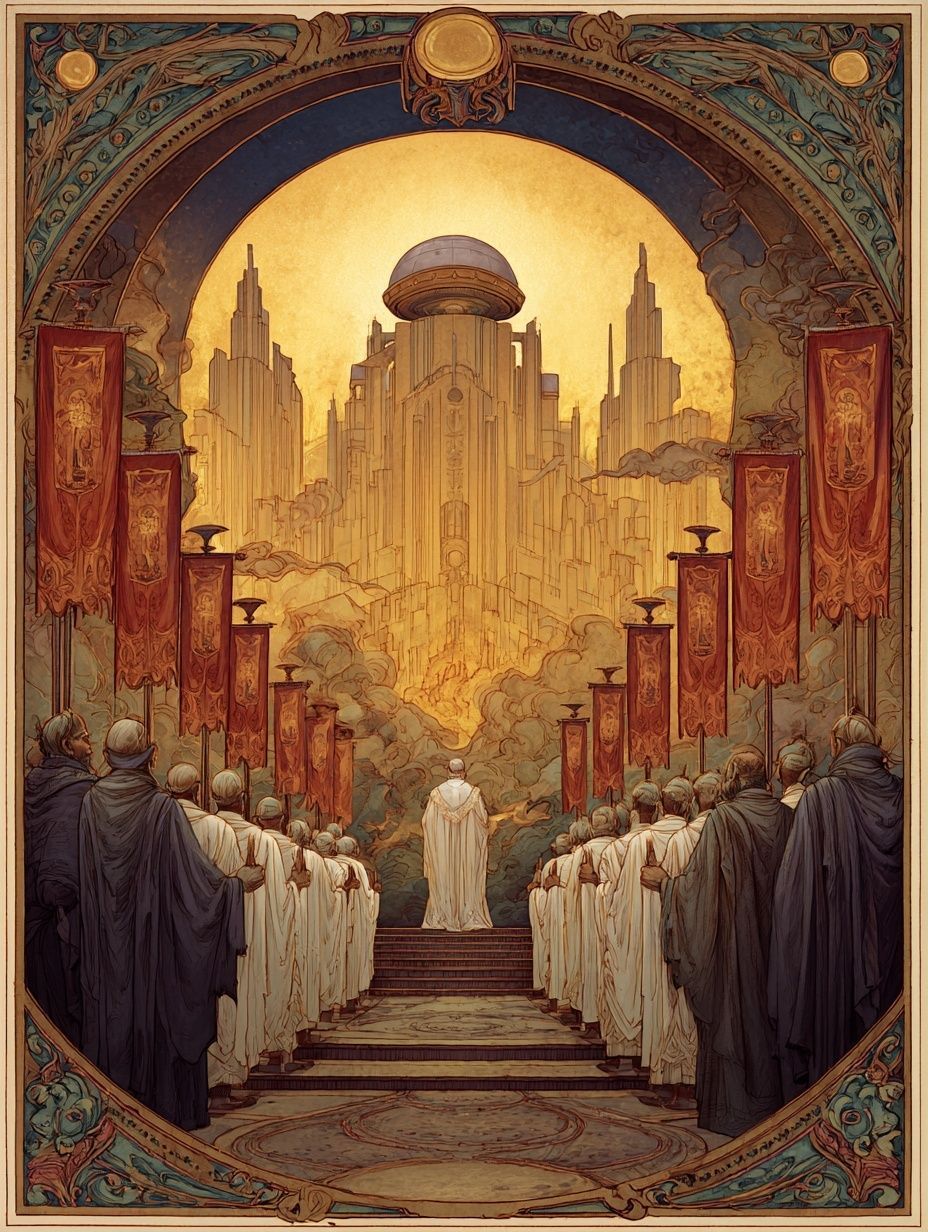
The gods' assembly and Babylon's rise
After his victory over Tiamat, Marduk divided the gods of Babylonia into two primary assemblies:
- The Igigi: These are the gods of the upper world and the heavens. The Enuma Elish gives their number as 600. They represent the celestial aspect of the divine order.
- The Anunnaki: These are the gods of the lower world, or the earth. While sometimes their number is given as fifty, other contexts suggest they were a larger group.
In the creation myth, after mankind is created to serve the gods, the Anunnaki of earth are established and it's they who, in gratitude, build the city of Babylon and the temple Esagila for Marduk.
This temple served as Marduk's earthly home and a central meeting place for the gods.
Marduk then set universal laws and divided power among the gods, making his rule supreme over all. The gods put down their weapons, and Anu even named Marduk's bow and placed it in heaven as the constellation Canis Major.
The new divine order - a political statement
Marduk’s rise to power was a deliberate political and religious act. In fact, the Enuma Elish, was written to legitimize this new order.
- Political Shift: Before Marduk, Mesopotamian religion was more decentralized, with different cities and their own chief gods. But as the city of Babylon gained political dominance, its patron god, Marduk, had to be elevated to the top of the divine world to reflect the city's power.
- The Gods' New Roles: The epic explains why the older gods willingly gave Marduk their power and allowed him to establish a new cosmic order.
The myths of other gods weren't erased, but their stories were now framed within the larger narrative of Marduk's ultimate supremacy.
Marduk's many names and the symbolism of supreme power
To acknowledge his ultimate authority and celebrate his many powers, the gods gave Marduk "Fifty Names." Each name represented a different part of his power, wisdom and control over the universe.
A few of those names were:
- Asaru: Bestower of husbandry.
- Asaru-alim: Powerful in counsel.
- Tutu: Maker of their restoration.
- Zi-ukkinna: Life of the host of the gods.
- Sagzu: Knower of the thoughts of the gods.
This act formally recognized his absolute supremacy as the creator, lawgiver and king of the gods. The epic ends with a hymn of praise, celebrating Marduk's victory and his newly established status as the supreme deity.
Over time, Marduk was often referred to simply as Bel, meaning "Lord," which further cemented his status as the ultimate authority.
His ascension was commemorated every year in the Akitu festival, where his story was ritually reenacted to renew his power and the king's authority.
The epic's lasting impact
The Enuma Elish was a vital part of Babylonian religious life. It was recited every year during the Babylonian New Year's festival (Akitu), a key ritual that confirmed cosmic order and Marduk's kingship for the coming year.
Its themes influenced Babylonian art, with images of Marduk's battle against Tiamat's monsters appearing in various forms.
The epic's influence spread beyond Babylonia. The Assyrians, who would come after, adapted the epic, sometimes replacing Marduk with their national god Aššur to fit their own imperial beliefs.
This was a "violent racial treatment" of the poem, showing how powerful myths could be changed to suit the political and cultural needs of a ruling state.
The Enuma Elish also played a significant role in shaping later ideas about creation throughout the ancient Near East, leaving a deep mark on the region's understanding of how the world began and the forces that governed it.

The Enuma Elish is an important cornerstone of Babylonian mythology. Its dramatic story, shows order triumphing over chaos and its deeper themes have offered a lasting contribution to the world's folklore.
It also offers a fascinating look into how one of humanity's earliest civilizations understood its own beginnings and the forces that shaped its existence. Could you imagine what it was like to be alive back then and trying to understand why you were there?!
Don't forget to checkout my
intro article to ancient Mesopotamian folklore for the context of how Babylon fit into the ancient culture timeline.
Article sources
- Langdon, Stephen. Sumerian Epic of Paradise, the Flood and the Fall of Man. Philadelphia: The University Museum, 1915.
- King, Leonard W. A History of Sumer and Akkad: An Account of the Early Races of Babylonia from Prehistoric Times to the Foundation of the Babylonian Monarchy. London: Chatto & Windus, 1910.
- Langdon, S. The Babylonian Epic of Creation: Restored from the Recently Recovered Tablets of Aššur. Oxford: At the Clarendon Press, 1923.
- Budge, E. A. Wallis. Babylonian Life and History. 2nd ed. London: The Religious Tract Society, 1925.
- Sayce, Archibald Henry. The Religions of Ancient Egypt and Babylonia: The Gifford Lectures on the Ancient Egyptian and Babylonian Conception of the Divine. Edinburgh: T. & T. Clark, 1902.
Shop this rare, foundational ebook on Enuma Elish
I spend a lot of time digging through old and out-of-print folklore texts and curate selected titles as digital editions.
The Babylonian Epic of Creation by renowned Assyriologist, Stephen Langdon, was one of the core texts I used to create my article series on ancient Babylon and Mesopotamia.
Langdon consulted the original cuneiform (clay) tablets in the British Museum to give a definitive and fascinating dive into the ancient beliefs discussed in this article - and much more (note: this is a scholarly text and not a light read!).
I've given the ebook a new cover, tidied and compressed the original scans and repackaged it into a convenient digital download at a great price. Check out this epic folklore text here.
(Clicking the link will open the Mythfolks Etsy shop in a new tab.)
You might also like
This deeply complex pantheon is full of fascinating figures that tell us more about life thousands of years ago. Learn more here.
What was Mesopotamia and what cultures fed into its ancient mythology? Find out here.


